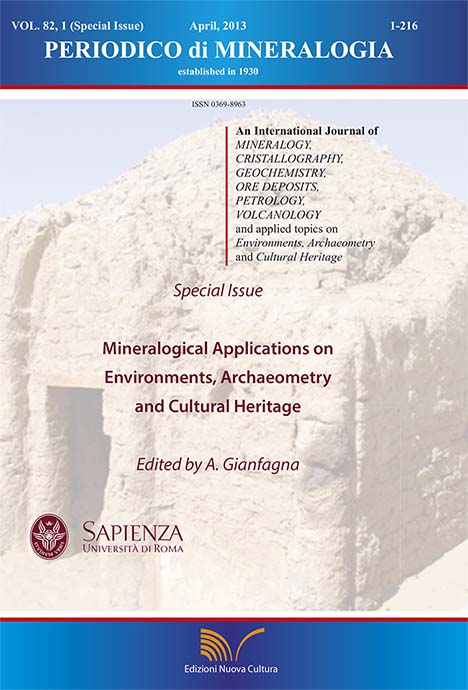Polymetallic mineralization of the Boranja orefield, Podrinje Metallogenic District, Serbia: zonality, mineral associations and genetic features
DOI:
https://doi.org/10.2451/2013PM0004Keywords:
polymetallic ore, sulfosalts, native metals, Boranja orefield, Serbo-Macedonian Metallogenetic ProvinceAbstract
In the Serbo-Macedonian Metallogenetic Province, which is a part of the Alpine metallogenic unit, the ore deposits lie in number geotectonic units; they embrace part of the Vardar Zone, Serbo-Macedonian massif, and a small part of the Dinarides. This metallogenic province has been delineated mostly by reference to the Neogene metallogeny, related predominantly to granodiorite magma. These deposits include the most significant Pb-Zn and Sb deposits in Serbia, as well as smaller Bi, Mo, Cu, Fe, Sn, Au and minor U, W and Hg deposits. The Podrinje Metallogenic District belongs to the Serbo-Macedonian Metallogenetic Province. Smaller metallogenic provinces are isolated within the scope of the following orefields: Cer (Northwest Serbia), Boranja (West Serbia), and Srebrenica (East Bosnia & Herzegovina). Polymetallic deposits in the Boranja orefield are genetically related to the emplacement of a Tertiary granodiorite complex. It consists primarily of a large number of sulfide deposits with Pb-Zn, and Sb; with subordinate Cu, As, Bi and Ag. Among them, the presence of small magnetite deposits, connected to the pyrometasomatic (skarn) stage is significant. Skarns are of calcic type, and were formed along contacts of Triassic limestones and quartz diorites. Ore minerals are similar among the various types of orebodies in the Boranja orefield and consist of sulfides (pyrrhotite, pyrite, marcasite, chalcopyrrhotite, chalcopyrite, cubanite, mackinawite, valleriite, covelline, chalcocite, bismuthinite, molybdenite, sphalerite, mercurian sphalerite, greenockite, galena, arsenopyrite, stibnite, duranusite, realgar, orpiment, cinnabar, metacinnabar); sulfosalts (bursaite, cannizzarite, cosalite, aikinite, ustarasite, tetradymite, ferrian tetrahedrite, argentian tetrahedrite, pyrargyrite, diaphorite, freieslebenite, schirmerite, fizelyite, stannite, jamesonite, boulangerite, bournonite, As-bournonite, falkmanite, zinkenite, fuloppite, robinsonite, plagionite, twinnite, geocronite, gratonite); telluride (calaverite); native metals and alloys (gold, silver, electrum, bismuth, arsenic); oxides and complex-oxides (magnetite, hematite, rutile, anatase, scheelite, powellite, valentinite, senarmontite, kermesite, adamite, arsenolite); and gangue minerals (silicates, carbonates, fluorite, calcite, siderite, Mn-Zn siderite, fluorite, apatite, barite, dolomite, anglesite, cerussite, smithsonite, otavite, malachite, azurite, scorodite, quartz, limonite, organic matter). Minerals of the titled orefield were formed in several successive stages, which together correspond to a unique cycle of mineralization that is genetically related to the subvulcanic-plutonic intrusion of the Neogene-aged magmatic Boranja complex. Mineral associations, which have spatial-zonal arrangement, are rhythmically developed from the Tertiary granodiorite of Boranja to outside surroundings: A) Fe-Cu(Bi) belt → B) Pb(Ag)-Zn belt → C) Sb(As) belt → D) CaF2(Pb-Zn) belt.


